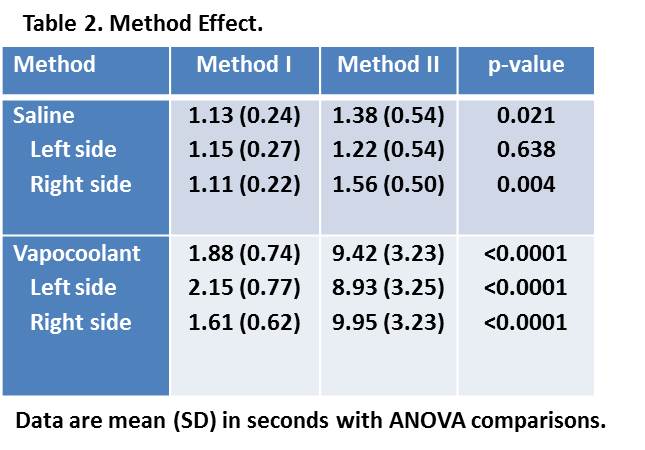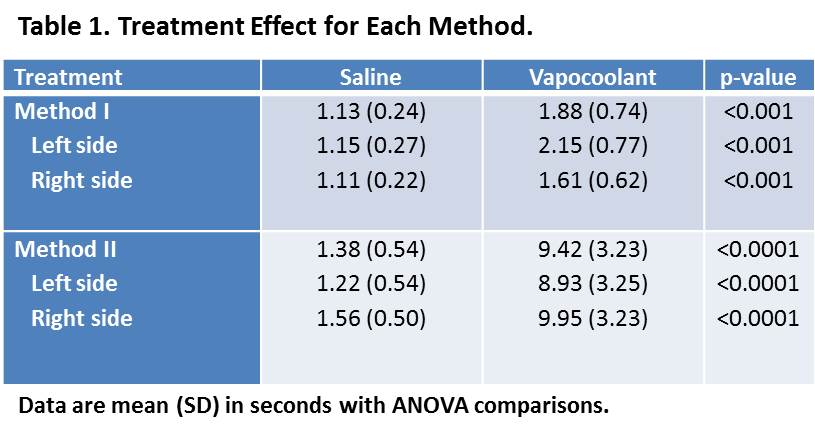NM-317
Efficacy and Safety of Vapocoolant Spray during Repeated Needle Stick Of Rat Pups Hindpaws
Sethna N, Yahalom B, Zurakowski D
Boston Children's Hospital, Boston, MA, USA
Introduction: Infants have blood drawn frequently in the NICU for screening/diagnostic tests and heel-lance accounts for 2/3 of these tests. Neonatal exposure to repetitive poorly managed pain at a crucial time of the nervous system development may trigger adverse behavioral and neurodevelopmental outcomes.(1) Opioid/NSAIDs analgesics in newborns may cause cardiorespiratory depression and adverse effects with repeated administration on brain development. Given that the infants are denied analgesics and ineffectiveness of the topical anesthetics for heel glabrous skin, we previously demonstrated analgesic effectiveness of a the topical vapocoolant spray on the hind paw of rat pups.(2) We hypothesized that the 1) Vapocoolant spray prolongs the latency time of reflex flexion withdrawal in rat pup hindpaws in response to heat pain after application by two methods; method I (MI) 4-second application at 3 inches distance and in method II (MII) 10-second application at 7 inches distance. 2) Repeatedly applications on a single hind paw before heel-lances will not produce histopathological toxicity.
Methods: After IRB approval, we used awake Sprague-Dawley rat pups aged 7 days old, both male and female a total of 64 rat pups in efficacy and 40 in toxicity study. For efficacy 32 rat pups were included in MI and 31 in MII. The vapocoolant was randomly applied once to one hindpaw and saline on the other. Heat pain sensitivity to spray was measured by contact with a hotplate device. For toxicity, 20 rat pups were assigned to either MI or MII. After each application, heel-lance was performed with the use of BD Quikheelâ„¢ Lance. This procedure was performed 3 times daily for 2 days.
Results: Table1, 2.
Discussion: Both MI and MII significantly increased heat pain thresholds relative to saline but the magnitude was significantly greater with MII vs. MI by 4 folds. There were no pathology was identified in the 40 hindpaws. This is the first study to demonstrate effectiveness and safety of a topical anesthetic on glabrous skin. We plan to expand the investigation to determine if the effectiveness would minimize the negative brain neuroimaging findings observed in NICU infants after repeated heel-lancing without the benefit of analgesia.
Conclusion: Although it is difficult to translate the rat pup data to human infants the safety and efficacy data of this study is encouraging and deserves further exploration in neonatal clinical trials.
References
1. Brummelte S et al., Annals of neurology. 2012;71(3):385-96.
2. Sethna NF et al., Anesth Analg. 2014;119(6):1367-72.
Top













